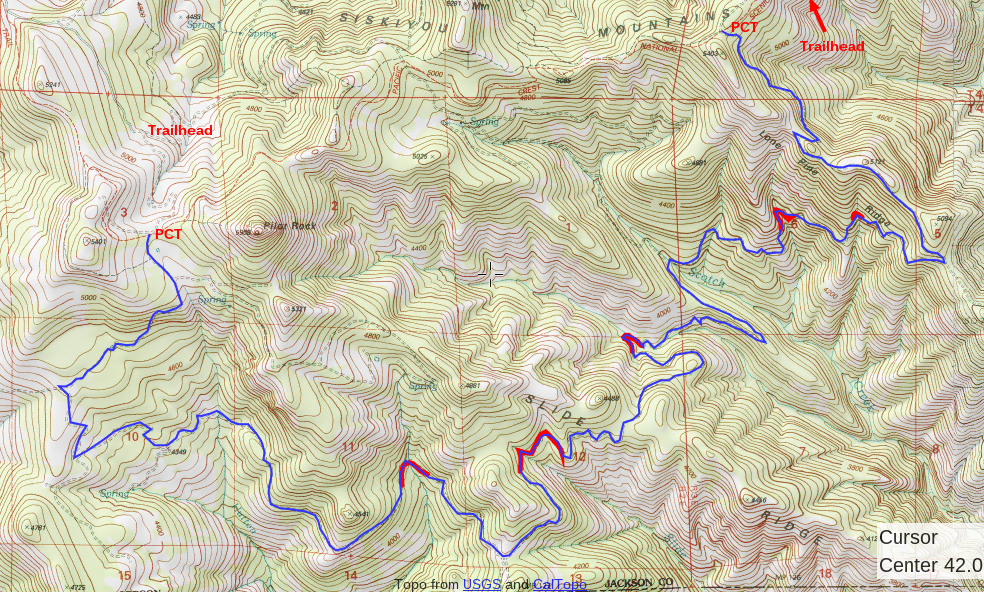 |
| Pacific Crest Trail, before |
6 June 2013 | Ashland, OR -- The Siskiyou Mountain Club was busy across the Siskiyou range last weekend.
We kicked things off with an overnight trip with the Pacific Crest Trail Association. Two saw teams split up to log out the Soda Mountain Wilderness portion of the Pacific Crest Trail between Soda Mountain Road and Pilot Rock.
 |
| After |
Then the next morning we hiked to Boccard's point, with some bird lessons along the way.
"I like birding because I can do it all the time," says Ian Nelson, the Pacific Crest Trail Association's regional representative.
He pointed out a lazuli bunting, rock wren, and many other birds on their way through the Cascade-Siskiyou National Monument.
From Boccard's point were panoramic views of the Klamath basin, Mt. Shasta, Pilot Rock and Mount Ashland. To the south we could see the Trinity Alps and Marble Mountain Wilderness' in California. And right below us was the Soda Mountain Wilderness Area, Ashland's best kept secret.
 |
| Ian Nelson of the PCTA and Brandon Andre gaze into the Soda Mountain Wilderness from Boccard's Point |
The next morning, June 9, the Club took things west and met up with Scott Hoelscher, head gardener for Leach Botanical Gardends in Portland, OR. We met at Taylor's Country Store in Cave Junction and headed up Rough & Ready Creek.
After a couple hours of slow hiking, fast botanizing and a bald eagle siting, a couple of us headed up an old road to near Alberg Mine.
 |
| The "yellow brick road." |
The flowers were out, and so was the sun. The route up was steep, and steeper. And the summit of this serpentine ridge was just outstanding.
"The PCT is great, especially for families," says SMC executive director Gabe Howe, staring into the headwaters of Josephine Creek. "But my heart is in this forsaken land, where nothing grows well, but where almost everything grows."
 |
| Lewisia pygmea |



























.jpg)






.jpg)
